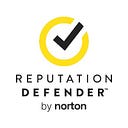Online Reputation Management: The Three Phases
You probably already know what Online Reputation is and why it is important to take it into account in your digital strategies, but what good is that going to do if you don’t know how to manage Online Reputation?
The terms manage, monitor and research are often misused. So we are going to clarify what exactly each of these terms corresponds to so that you are clear and do not make that mistake again.
Phases for Online Reputation Management
There are 3 basic steps to guarantee your success in taking care of your brand’s Online Reputation:
1. Research
Study your current situation! First of all, it is essential to know what is the perception and opinion of users regarding your brand — services, products, way of doing things etc.. For this reason, it is advisable to carry out an audit that allows you to know what has been said about your company in the past in a given period of time.
This is where you start your research. This involves systematically collecting the information marked by a series of keywords, which you have previously selected, in the time frame you have deemed appropriate.
You can go back from a hypothetical today to one or two years or just a few months. All of this will depend on the volume of resulting information and your needs. To help you in this task there are many web mining technology tools, both free and paid.
You should not confuse research with monitoring, which is another phase of your management plan. Research consists of knowing what users think of your brand, product or service and seeing what impact that perception has in the online world on the reputation of your company. You can measure whether or not your brand has an Online Reputation, but not a specific number.
To do it properly, you must:
- Build a sample population based on a specific parameter such as age, geographic location, etc.
- Develop image questionnaires. It has been proven that market research on the Internet is the most reliable, because in front of a screen people have no problem to say what they really think.
- Identify through which media this image is created and classify them by influence and relevance ratios.
2. Monitoring
Once you know where your brand stands, you will know what resources you will have to take into account to control your entire reputation. So the next step is to implement a monitoring and active listening plan that provides you with daily information about all the mentions and references to your brand and its environment on the network — this is known as monitoring.
Just as research has a first phase of extracting textual information from forums, blogs, websites, etc. based on the keywords you have previously selected through web mining tools. However, in this case, the time frame in which it is carried out is from a hypothetical today forward through a daily and cumulative control of the information, which the tools classify automatically.
3. Administration
When you have extracted, analysed and interpreted all the data and transformed it into valuable information for your company, you have the necessary arguments to make decisions. From this point on, you can define action plans in communication and public relations in order to improve your company’s performance:
- Influence: it is interesting to set an influence strategy in online media and social networks in order to reach your target audience in a precise way. You can use buzz marketing or word-of-mouth marketing campaigns to increase your influence.
- SEO: directly related to influence is the work of SEO through content creation. The aim is to increase visibility and positive entries in the main search engines (Google, Yahoo and Bing) and consequently to opt for the highest possible position in their rankings.
Optimising your company’s influence on the web and its SEO responds to two objectives. One, quantitative, in which you seek to obtain the best possible position in the search engine ranking and also to increase the number of mentions and information about your brand on social networks, blogs, forums and websites. And the other, qualitative, in which what you want is complicity and engagement with your users by generating conversation around your brand, your product or your service, i.e. generating engagement with your community.
